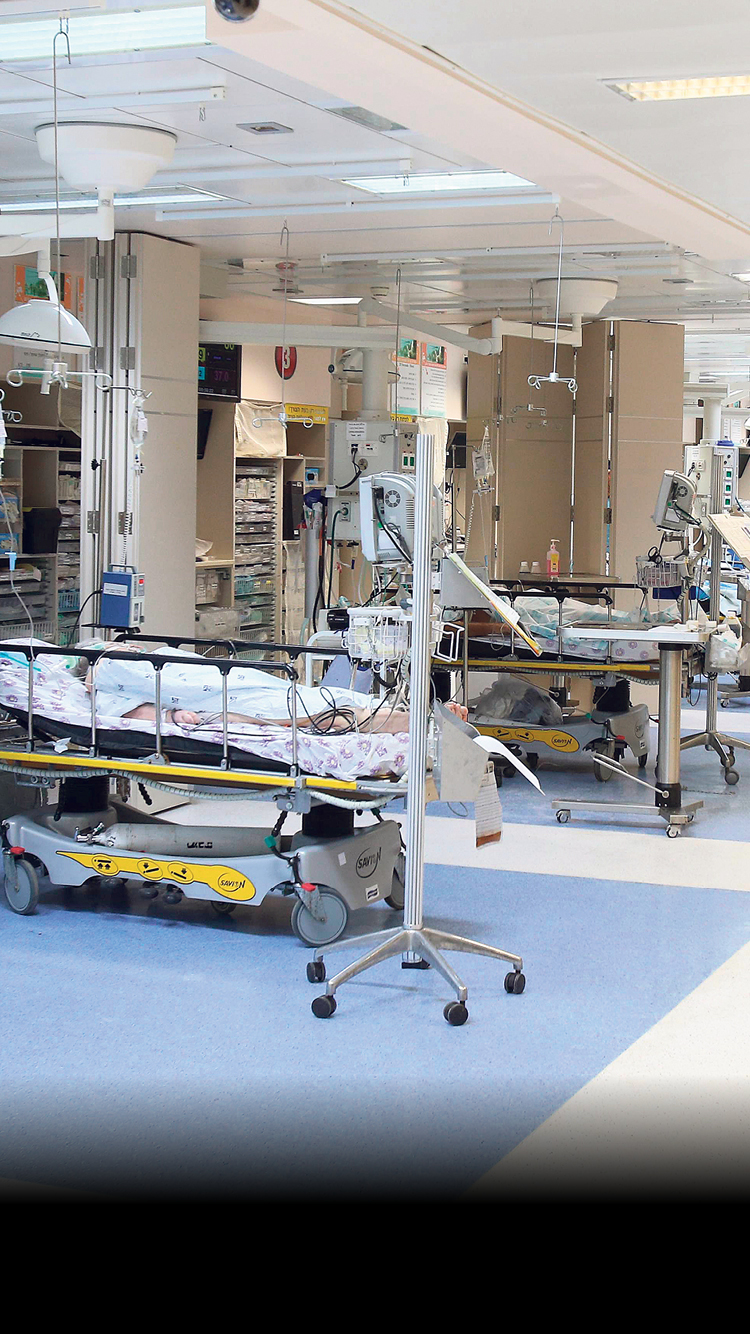
A report recently published for the first time by the Ministry of Health lists the hospitals in which patients are most likely to contract infections and where patients have the best chance to come out alive.
The data collected by the Ministry of Health refers to sepsis, which is a specific kind of infection possibly originating from a subcutaneous central venous catheter.
This type of catheter is commonly used in ICU patients since it helps to avoid repeated needle insertion of the patient for the purpose of drawing blood and administering fluids and medications.
The findings, which will be presented to the State Control Knesset Committee, reveal that among the biggest hospitals in the country, Rambam (Haifa) has the highest rate of blood infections.
Among the medium-sized hospitals, Hillel Yaffe (Hadera) is in the lead, and among the smaller hospitals, one of the most problematic is Laniado (Netanya).
The hospitals that which have shown an improvement include Soroka in Beer Sheva, Haemek in Afula, and Hasharon in Petah Tikva.
The rate of blood infections is calculated worldwide as cases of infection for every thousand catheter-life days. According to estimations, the infections rate in Israeli hospitals is significantly higher than in hospitals in Europe and the US.
Nevertheless, calculating by the number of infection cases for every one thousand days of an installed catheter during ICU treatment ignores substantial factors that affect the risk of contracting a blood infection such as the patient's age (mainly pediatric and geriatric patients), the cause of hospitalization (burns, for instance, increase the risk), co-morbidity (patients with cardiovascular diseases are at a higher risk) and gender (men are at higher risk than women).
In addition, the duration of hospitalization also affects the chance of contracting an infection; the lengthier the stay, the higher the chance.
Sepsis can be very dangerous and even have fatal consequences. A study conducted in the US found that patients with sepsis are 2.27 times more likely to die compared to patients without it.
In less severe cases, sepsis lengthens the duration of hospitalizations and can result in repeated hospitalizations, which obviously increases patients' suffering and adds to the financial burden of the hospitals.
"The infections in hospitals are an epidemic that is threatening our health care," said Health Minister Yaakov Litzman. "The worrying numbers oblige us to take extreme measures in order to reduce the phenomenon and that is a top priority. Under my initiative, the Ministry of Health is taking drastic measures, which will lead to the necessary changes."
"The publication of the report is a great achievement, not only for the State Control Committee and the Ministry of Health, but also for the people of Israel," said the chairperson of the State Control Committee, MK Karin Elharar (Yesh Atid). "We have gotten very far with issues like transparency and making vital information available to the public. The ability to monitor and supervise is an efficient tool to improve the government's work."

















